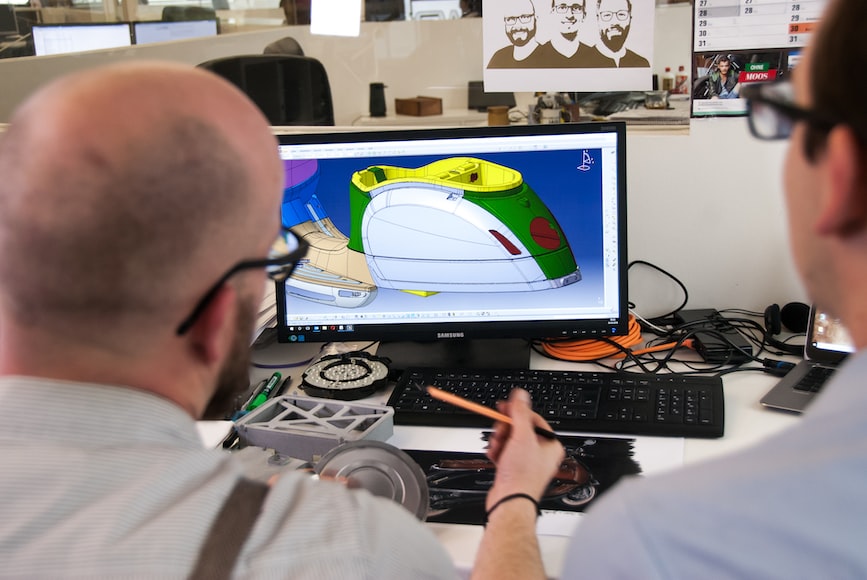Becoming an Industrial Designer: Steps to Take in Your Career Path
Industrial design is an exciting field that combines creativity, innovation, and problem-solving skills to design and develop products and systems that improve people's lives. Industrial designers work in a wide range of industries, from consumer electronics and appliances to automotive and medical devices. If you're interested in becoming an industrial designer, there are several steps you can take in your career path to achieve your goals.

Photo: Kumpan Electric/Unsplash
Step 1: Gain a strong foundation in design and art
To become an industrial designer, you need a strong foundation in design and art. This means pursuing a degree in industrial design, product design, or a related field. Many universities offer bachelor's and master's degrees in industrial design, which provide a comprehensive education in the principles of design, including color theory, form, and function. These programs also teach students how to use design software, such as AutoCAD and Adobe Creative Suite, which are essential tools for industrial designers.
Step 2: Develop your skills through internships and apprenticeships
Internships and apprenticeships are an excellent way to gain hands-on experience and develop your skills as an industrial designer. These programs offer opportunities to work with experienced designers and learn from their expertise. You'll also get the chance to work on real-world design projects and build your portfolio, which is critical when applying for jobs.
Interesting fact:
Industrial designers are employed in a variety of industries, including manufacturing, wholesale trade, and professional, scientific, and technical services.
Step 3: Build a strong portfolio
Your portfolio is a reflection of your skills, creativity, and design philosophy. It's a collection of your best work, showcasing your design process, ideas, and final products. Your portfolio should include a variety of projects that demonstrate your versatility as a designer, from sketches and concept drawings to finished products. It's essential to showcase your ability to solve design problems and communicate your ideas effectively.
Step 4: Network and build industry connections
Networking is a critical aspect of any career, and industrial design is no exception. Building industry connections can help you learn about job opportunities, meet potential employers, and stay up-to-date on industry trends and innovations. Attend design conferences, join professional organizations, and participate in online forums to meet other designers and build your network.
Step 5: Stay up-to-date on technology and software
Industrial design is a field that is constantly evolving, and it's essential to stay up-to-date on the latest technology and software. This means learning about new design software, 3D printing, and other emerging technologies that are changing the way industrial designers work. Staying current with new tools and techniques can help you remain competitive in the job market and provide new opportunities to explore your creativity.
Step 6: Master the design process
The design process is a critical aspect of industrial design, and mastering it is essential to succeed in the field. This process involves understanding the problem you're trying to solve, researching and gathering information, brainstorming and ideation, prototyping, testing, and refining your design. Each step in the process requires critical thinking, creativity, and attention to detail.
Step 7: Learn the business side of industrial design
Industrial design is not just about creating beautiful products; it's also a business. Understanding contracts, pricing, and negotiation is essential when working with clients and managing your own design projects. Learning the business side of industrial design can help you navigate the industry and build a successful career.
Step 8: Pursue advanced education and certifications
Advanced education and certifications can help you specialize in a particular area of industrial design and stand out in the job market. Many universities offer master's degrees and certifications in specialized areas such as medical device design, transportation design, and sustainable design.
In conclusion, becoming an industrial designer requires dedication, creativity, and hard work. By following these steps, you can develop your skills, build a strong portfolio, and network with other designers to achieve your career goals.
- A strong foundation in design and art is crucial for becoming an industrial designer.
- Internships and apprenticeships provide opportunities to gain hands-on experience and develop skills.
- Building a strong portfolio is essential for showcasing skills and creativity.
- Networking and building industry connections can provide job opportunities and keep you up-to-date on industry trends.
- Staying up-to-date on technology and software is important in the constantly evolving field of industrial design.
- Mastering the design process is critical to success in the industry.
- Learning the business side of industrial design is important for managing projects and working with clients.
- Pursuing advanced education and certifications can help specialize and stand out in the job market.
FAQ
What is an industrial designer?
An industrial designer is a professional who designs and develops products that are both functional and aesthetically pleasing.
What education is required to become an industrial designer?
Most industrial designers have a bachelor's degree in industrial design or a related field such as engineering or architecture.
What is the future of industrial design?
The future of industrial design is likely to be shaped by advancements in technology and an increased focus on sustainability and social responsibility. Industrial designers will need to continue to adapt to these changes and incorporate them into their work.
What are some current trends in industrial design?
Some current trends in industrial design include the use of sustainable materials and the incorporation of smart technology into products.